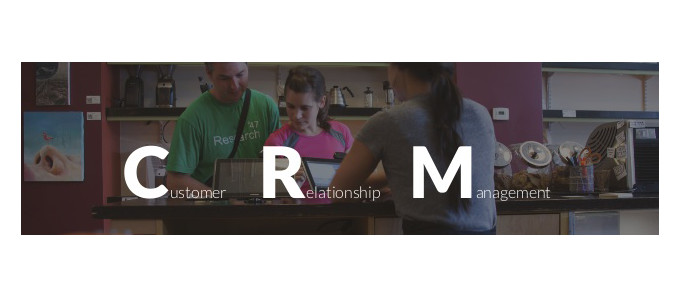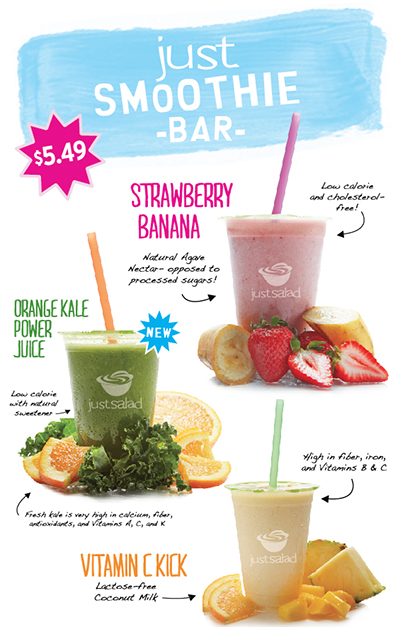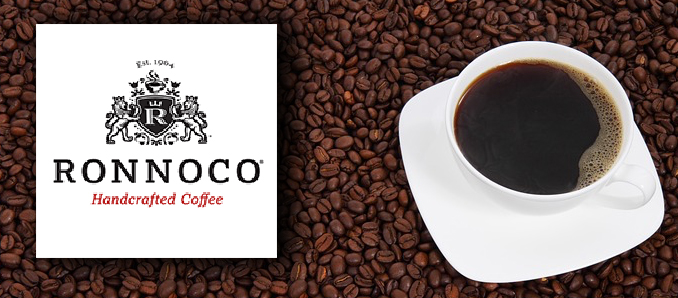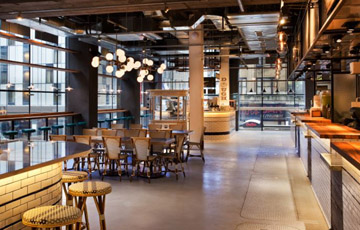5 Concepts to Help Shape Restaurant CRM in 2017
By Anna Bogdanova, Head of Brand, LoyaltyPlant
 Although Millennials spend over 44% of their food dollars on eating out (which is a lot more than just a few years ago), they are not the easiest bunch to turn into regular customers. Older generations even more so due to typically larger income and evolving tastes. 2017 just might be the year of engagement crisis for fast casual restaurants and chains: people are getting really weary of similar marketing campaigns and messages they are constantly bombarded with.
Although Millennials spend over 44% of their food dollars on eating out (which is a lot more than just a few years ago), they are not the easiest bunch to turn into regular customers. Older generations even more so due to typically larger income and evolving tastes. 2017 just might be the year of engagement crisis for fast casual restaurants and chains: people are getting really weary of similar marketing campaigns and messages they are constantly bombarded with.
What still works really well, however, is engaging customers on their own terms, and mobile channels are great for that. 70% of mobile phone users actually want to have loyalty cards on their devices, and recent research shows that overall activity on mobile devices now accounts for two-thirds of digital media time. So, here are five concepts to consider when defining your 2017 CRM strategy:
1. Incentivize Your Customers to Share Personal Data
The success of your marketing efforts heavily relies on what you know about your customers, and your customer database needs to be a year-round priority. Keep in mind that nobody will fill out guest experience cards these days. Customers want to release their personal information on their own terms and in the easiest and most rewarding way.
If you have a mobile app, the data gets richer as customers use it and engage with it, so make sure you continually give reasons for new customers to install it and existing users—to log in. If customers know upfront what they are signing up for and are incented, they’ll be less likely to delete your loyalty app or unsubscribe from communications later on.
Ideas:
- Make it a quick and easy experience for your customers to install your restaurant app and register their personal info using your wi-fi access. Offer an incentive like a menu item for the download.
- Consider an ongoing lottery with a regular prize like a meal for two: restaurant guests are usually much more inclined to share personal data if there is a drawing involved.
2. Get Laser Focused in Your Targeting
Use the year end and Q1 to exhaustively analyze which tools your specific audience engages with most and reflect on which campaigns have worked effectively for your restaurant. Then consolidate your marketing to fuel these efforts. Carefully segment your audience for different campaigns and analyze results afterwards—you need to know exactly how effective your tactics are and who you are addressing. Make sure you target specific groups with highly tailored messages.
Ideas:
- Track birthdays: we see a high 35% conversion rate on average for birthday incentives in the fast casual segment, so invite your customers to stop by a week before or after their birthdays.
- Segment your existing and potential customers based on demographics, favorite menu items, important dates, etc. A married couple doesn’t need an email about a “singles special” on Valentine’s—target your younger demographic instead. Nor should you send giant burger promos to your vegetarian customers.
3. Focus on Mobile Apps
In Q2 prioritize hands-on marketing campaigns and mobile channels for communications. We know for a fact that mobile-based gamification works great as people really enjoy collecting points for visits or gaining a certain status at the restaurant. Using mobile apps for these campaigns means you can encourage active sharing of pictures and engagement of your community (especially if there’s an additional incentive to invite friends or share the message on social channels). Millennials represent the most “mobile-engaged” customer group, so you also maximize the use of tools like proximity notifications and actions on the go when targeting younger customers.
Ideas:
- Consider investing in a digital ordering system, so that your regular customers can rapidly pre-order their meals and pick them up at lunchtime.
- Offer the newest mobile and digital forms of payments that attract mobile-savvy customers. Customers now expect brands to offer these convenient options, and this trend will only continue to intensify.
4. Find Creative Ways to Upsell
Your focus for Q3 could be on upselling and increasing the average check amount. It’s an obvious way to grow the restaurant revenue, but the key here is to position the offerings as useful recommendations and bonuses that will make your customers’ visits even more enjoyable and fun.
Ideas:
- Offer additional points for a larger check or discounts for groups since summer is all about vacation and spending time with friends and family.
- Use bounce-back coupons to give your customers incentives to come back within the first 7 days of their visit. Chances are, if customers visit twice in 1-2 weeks, they’ll be coming back again—we’ve seen consistent success with this tactic.
5. Measure Incremental Sales
As you are reflecting on your results and reviewing your efforts in Q4, the emphasis should be on the incremental value of your marketing efforts. For example, based on the average number of weekly visitors, how many more people visited the restaurant since you’ve launched a particular campaign? Incremental value is probably the most important stat that you can gather by comparing historical data and your average numbers in a given week.
Ideas:
- If you are operating a fast casual chain, run a promotion in two locations out of four that perform at the same level. Then compare the revenue and other numbers with the locations that didn’t run a promotion.
- Analyze historical data for the same location comparing the week of running a promotion with the previous week. Pay attention to specific issues you are trying to solve: for example, if you want to fill up the restaurant at off-peak hours, run a weekly comparison of the off-peak purchases.
What are the key takeaways for restaurant owners and marketers? Ditch simple offers in 2017 relying on the fact that a 10% discount or another free slice of pizza just don’t cut it anymore. Instead, start building committed customer relationships through highly targeted and personalized mobile campaigns that deliver incremental value to your business.
Anna Bogdanova is Head of Brand at LoyaltyPlant, a mobile platform that helps restaurant owners and marketers build rewarding customer relationships and harness mobile apps and CRM to elevate customer loyalty and revenues.








